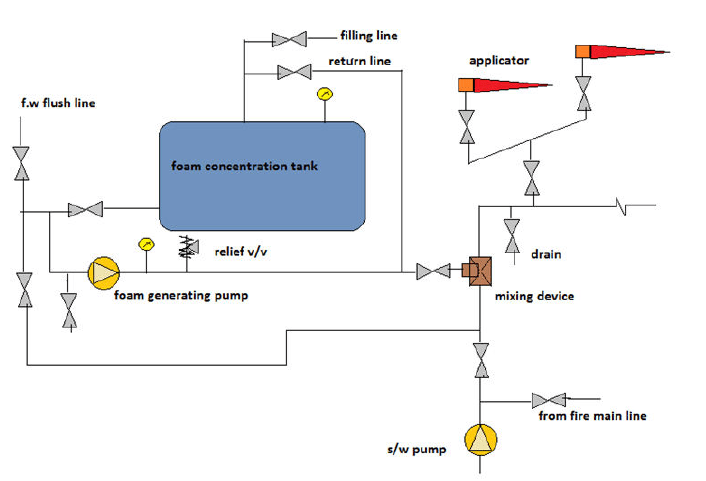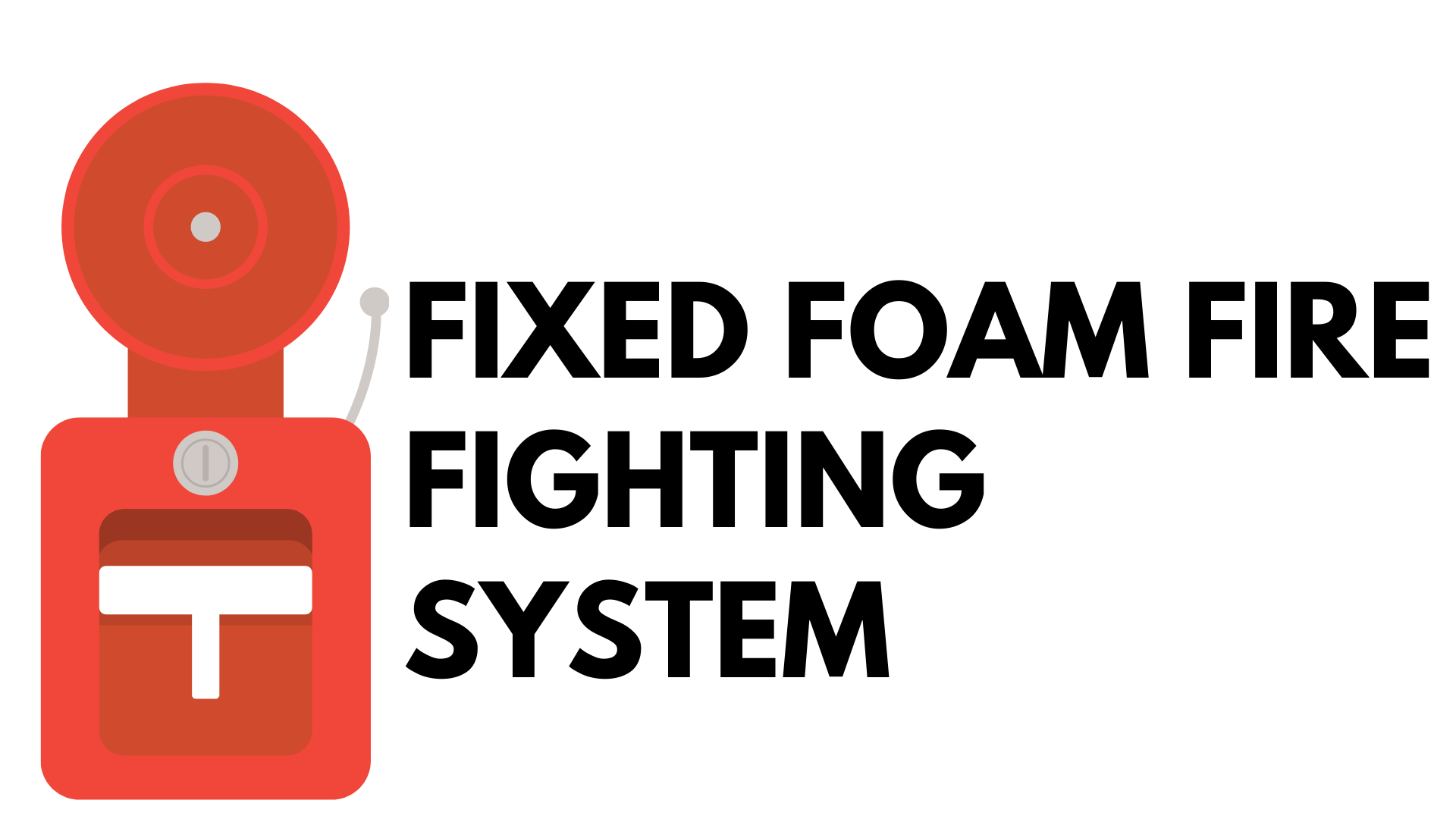
Fixed Foam Fire Fighting System – These systems are widely used in oil tankers . There are basically two types of foam, chemical and mechanical.
Chemical Foam
Chemical foam is formed by mixing together a solution of an alkali (usually sodium bicarbonate), an acid (usually aluminum sulfate), water and a stabilizer.
Mechanical (Air) Foam
Mechanical foam is produced by mixing a foam concentrate with water to produce a foam solution.
Types of mechanical foams
1. Protein Foam concentrate –It is diluted with water to form 3% to 6% solutions depending on the type and in general it is only used for crude oil fires .
2. Fluoroprotein Foam concentrate (FP)
3. Film Forming Fluoroprotein Foam (FFFP).
4. Aqueous Film Forming Foam (AFFF).
5. Alcohol Resistant-Aqueous Film Forming Foam (AR-AFFF).
6. Synthetic Foam.
Low Expansion Foams
Low expansion foams are considered to be those foams with an expansion ratio of 12:1 when mixed with air. That is one volume if foam concentrate will create 12 volumes of foam. Low expansion foams are effective in controlling and extinguishing most flammable liquid (Class “B”) fires. Foams typically used on tanker deck foam systems are of the low expansion foam type.
High-Expansion Foams
High-expansion foams are those that expand in ratios of over 100:1. Most systems produce expansion ratios of from 400:1 to 1000:1. Unlike conventional foam, which provides a blanket a few inches over the burning surface, high-expansion foam is truly three dimensional; it is measured in length, width, height, and cubic feet. High-expansion foam is designed for fires in confined spaces.
What are the advantages of Foam
i) Foam is a very effective smothering agent, and it provides cooling as a secondary effect.
ii) Foam sets up a vapour barrier that prevents flammable vapours from rising. The surface of an exposed tank can be covered with foam to protect it from a fire in a neighbouring tank.
iii) Foam is effective in blanketing oil spills. However, if the oil is running, an attempt should be made to shut down a valve, if such action would stop the flow. If that is impossible, the flow should be dammed. Foam should be applied on the upstream side of the dam (to extinguish the fire) and on the downstream side (to place a protective cover over any oil that has seeped through).
iv) Foam is the most effective extinguishing agent for fires involving large tanks of flammable liquids.
v) Foam can be made with fresh water or seawater, and hard or soft water.
vi) Foam does not break down readily, and it extinguishes fire progressively when applied at an adequate rate.
vii) Foam stays in place, covers and absorbs heat from materials that could cause re-ignition.
viii) Foam uses water economically.
ix) Foam concentrates are not heavy, and foam systems do not take up much space.
